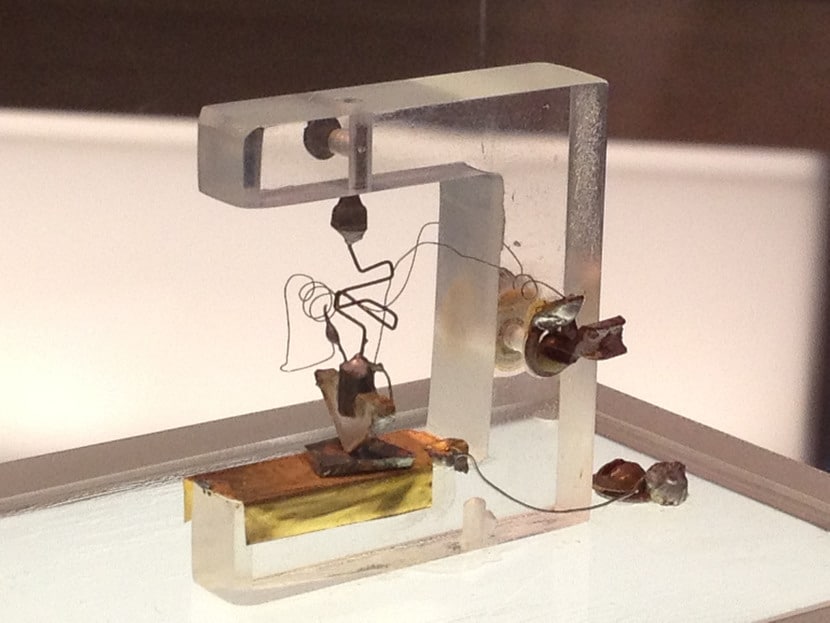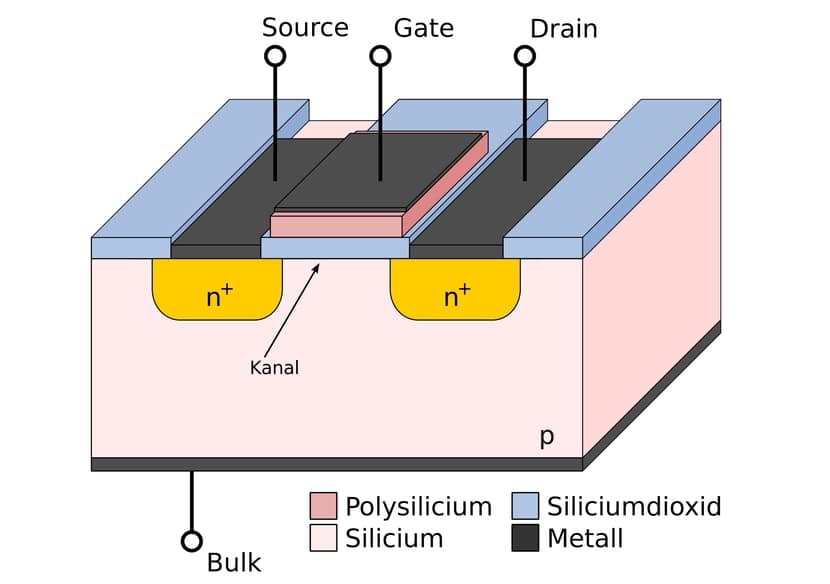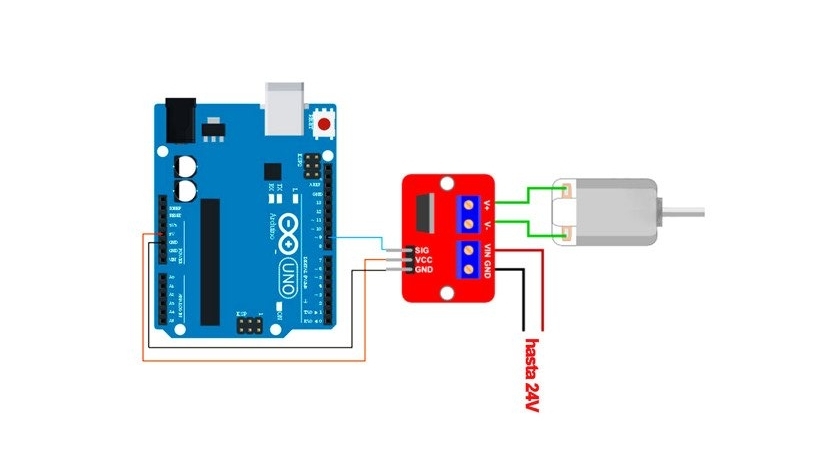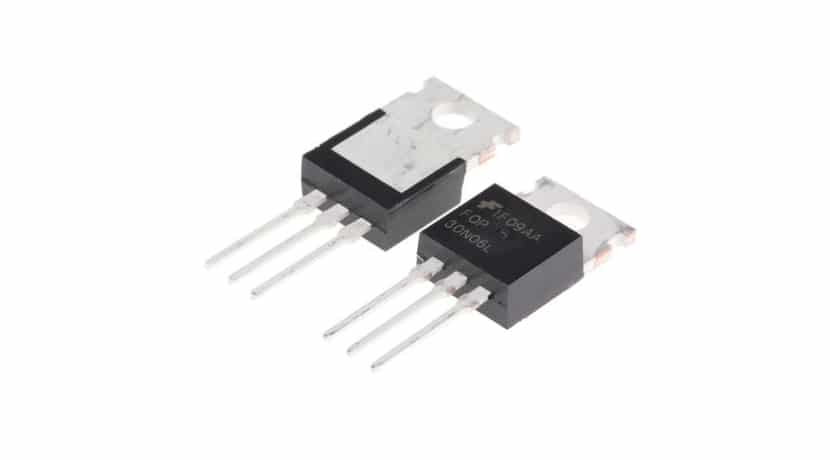
There are several types of transistors. These electronic devices are very important for today's electronics, and they represented a breakthrough in moving from vacuum tube-based electronics to solid-state-based electronics, which are much more reliable and energy-efficient. In fact, MOSFET They are used in most chips or integrated circuits, although you can also find them on printed circuit boards for many other applications.
Well, how is it? such an important semiconductor device, I am going to present you everything you need to know about this work of science and engineering that allows us to make so many circuits and that have improved our lives in many ways.
What is a transistor?
The word transistor comes from transfer-resistor, and it was invented in 1951, although in Europe there were already patents and developments before the Americans presented the first design, although this is another story ... At that time a device based on solid state, semiconductor, that could replace the crude and unreliable vacuum valves that made up computers and other electronic gadgets of the time.
All the valves or vacuum tubes It has a similar architecture to conventional light bulbs, and therefore also burned out. They had to be replaced frequently to keep the machines running. In addition, it was heated, and that means that they wasted large amounts of energy in the form of heat due to their inefficiency. Therefore, they were not practical at all and were in dire need of a replacement.
Well, in the AT&T Bell Labs, Williams Shockley, John Bardeen and Walter Brattain they got down to work creating that semiconductor device. The truth is that they had a hard time finding the key. The project was kept secret because it was known that something similar was developing in Europe. But World War II was crossed, and the protagonists had to go to battle. On the way back, they had mysteriously already found the solution.
El first prototype they created was very crude, and presented serious design problems. Among them, it was complex and complicated to manufacture in series. In addition, it used gold parts that made it more expensive and the tip sometimes stopped making contact with the semiconductor crystal, so it stopped working and had to be pushed to make contact again. The truth is that little had been solved with this invention, but little by little they were improved and new types appeared.
They already had an electronic component of solid state and smaller to reduce the size of radios, alarms, cars, computers, televisions, etc.
Parts and operation
The transistor is made up of three pins or contacts, which in turn make contact with three zones differentiated semiconductors. In bipolars these areas are called the emitter, base and collector. On the other hand, in unipolar ones, such as the MOSFET, they are usually called source, gate and drain. You must read the datasheets or catalogs well to know how to identify their pins well and not confuse them, since the operation will depend on it.
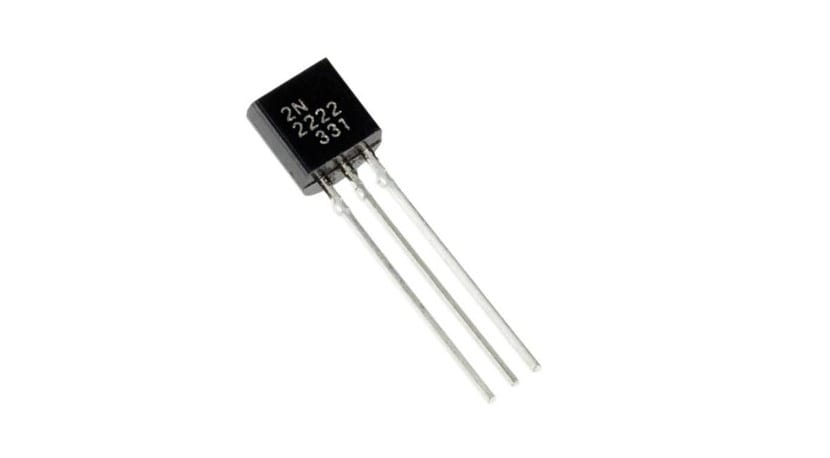
La door or base It acts as if it were a switch, opening or closing the passage of current between the other two ends. This is how it works. And based on this, it can be used for two basic functions:
- Function 1: It can act to pass or cut electrical signals, that is, as a switch for digital electronics. This is important for the binary or digital system, since by controlling the gate (with 0 or 1), you can obtain one value or another at its output (0/1). That way logic gates can be formed.
- Function 2: can also be used, for analog electronics, as signal amplifiers. If a small intensity reaches the base, it can be converted into a larger one between the collector and emitter that can be used as an output.
Types of transistors
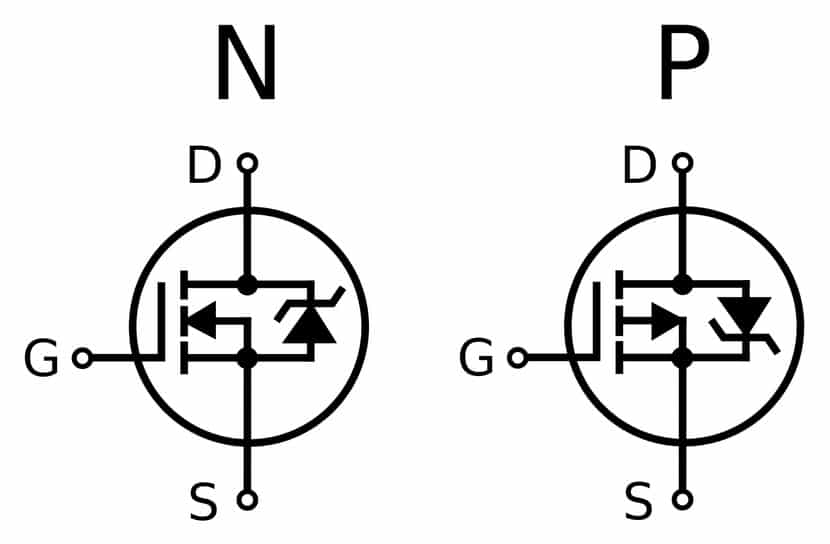
MOSFET symbols N and P
Once the basic operation and a bit of its history have been seen, over time they have been improved and created transistors optimized for a specific type of application, giving rise to all these two families that in turn have several types:
Remember that the N zone is a type of semiconductor doped with donor impurities, that is, pentavalent compounds (phosphorus, arsenic, ...). This will allow them to give up electrons (-), since the majority carriers are the electrons, while the minority ones are the holes (+). In the case of a P zone it is the opposite, the majority will be the holes (+), that is why it is called like that. That is, they will attract electrons. To achieve this, it is doped with other acceptor impurities, that is to say, trivalents (aluminum, indium, gallium, ...). Normally the base semiconductor is usually silicon or germanium, although there are other types. Dopants are usually in very low doses, on the order of one atom of impurities for every 100.000.000 atoms of the semiconductor. On some occasions, heavy or highly doped areas such as P + or N + can form, which have 1 impurity atom per 10.000.
- BJT (Bipolar Junction Transistor): it is the bipolar transistor, the most conventional. In this you have to inject a base current to regulate the collector current. Inside there are two types:
- NPN: As its name suggests, it has a semiconductor zone doped to be of type N to act as an emitter, another central P as base, and another for the collector also of type N.
- PNP: in this case it is the other way around, the base will be of type N, and the remaining two of type P. That will totally alter its electrical behavior and the way it is used.
- FET (Field Effect Transistor): the field effect transistor, and its most notable difference from the BJT is the way it is operated with its control terminal. In this case, the control is done by applying a voltage between the gate and the source. Within this type there are several subtypes:
- JFETs: those of FET junction are depletion, and have a channel or semiconductor zone that can be of one type or another. According to that, they can be in turn:
- Channel N.
- From channel P.
- MOSFET: its acronym comes from Metal Oxide Semiconductor FET, so named because a thin layer of silicon dioxide is used under the contact of the door to generate the necessary field with which the passage of current through its channel can be controlled so that there is flow between source and issuer. The channel can be of type P, so there will be two wells N for drain and source; or N-type, with two P-type wells for source and drain. They are somewhat different from the above, in this case you can have:
- Deplection or exhaustion:
- Channel N.
- From channel P.
- Enhanced or improved:
- Channel N.
- From channel P.
- Others: TFT, CMOS, ...
- Deplection or exhaustion:
- JFETs: those of FET junction are depletion, and have a channel or semiconductor zone that can be of one type or another. According to that, they can be in turn:
- Others.
All the differences are based on the internal architecture of the semiconductor zones each…
MOSFET
Un MOSFET allows you to handle large loads, which can be useful for certain circuits with your Arduino, as you will see later. In fact, its advantages make it so useful in modern electronics. It can act as an amplifier or an electronically controlled switch. For each type of MOSFET you buy, you already know that you should read the datasheet to see the properties, since they are not all the same.
The difference between one of channel N and P is
- Channel P: To activate channel P to pass current, a negative voltage is applied to the gate. The source must be connected to a positive voltage. Note that the channel the gate is on is positive, while the wells for the drain and source are negative. In this way the current is "pushed" through the channel.
- Channel N: In this case, a positive voltage is applied to the gate.
Conclusion very cheap items, so you can buy a good handful of them at no great cost. For example, here are some commercials that you can buy in specialized stores:
- No products found..
- N channel MOSFET transistors.
- No products found..
- Heatsinks.
If you are going to use it for higher powers it will heat up, so it would be good to use a heatsink to cool it a bit…
Integration with Arduino
A MOSFET can be very practical to control signals with your arduino board, therefore, it can serve in a similar way to how the relay module, If you remember. In fact, MOSFET modules are also sold for Arduino, as is the case with the No products found., one of the most popular. With these modules you already have the transistor mounted on a small PCB and it is easier to use.
But it is not the only one that you can use with Arduino, there are also other quite common ones such as the IRF520, IRF540, which allow nominal currents of 9.2 and 28A respectively, compared to 14A for the IRF530.
There are many MOSFET models available but not all are recommended to use directly with a processor like Arduino due to the limitation of voltage and intensity in its outputs.
If you use the IRF530N module, to put An example, you can connect the connector marked SIG on the board with one of the pins on the board Arduino UNO, such as the D9. Then connect GND and Vcc to the corresponding ones on the Arduino board, such as GND and 5v in this case to power it.
As to bar code Simple that would regulate this simple scheme would be the following, which what it does is to let the output load pass or not every 5 seconds (in the case of our scheme it would be a motor, but it can be whatever you want ...):
onst int pin = 9; //Pin donde está conectado el MOSFET
void setup() {
pinMode(pin, OUTPUT); //Definir como salida para controlar el MOSFET
}
void loop(){
digitalWrite(pin, HIGH); // Lo pone en HIGH
delay(5000); // Espera 5 segundos o 5000ms
digitalWrite(pin, LOW); // Lo pone en LOW
delay(5000); // Espera otros 5s antes de repetir el bucle
}
